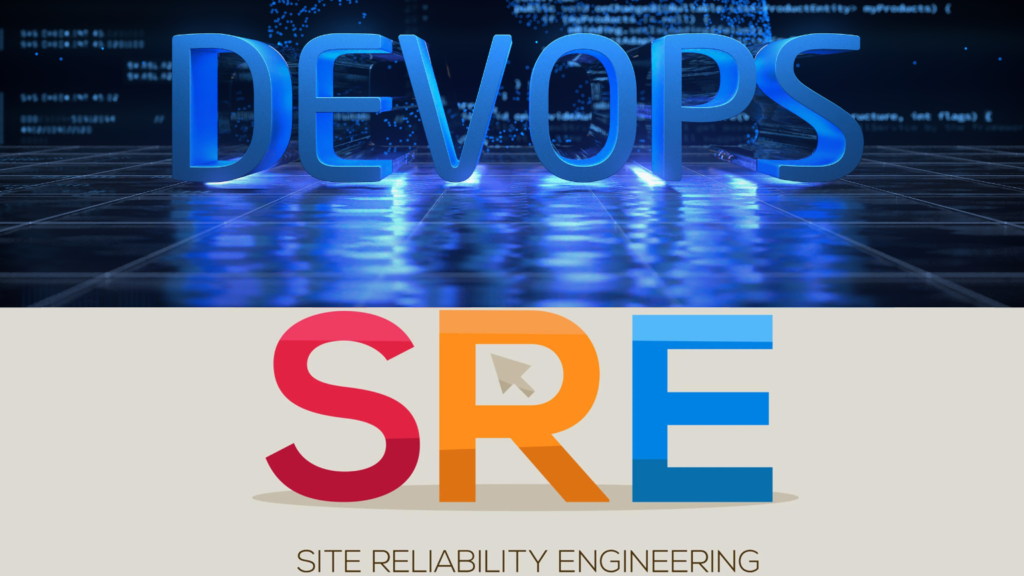The Purpose of Sprint Retrospective: Improving Quality and Effectiveness in Scrum

Scrum is a popular framework for agile software development that emphasizes collaboration, flexibility, and continuous improvement. One of the key events in Scrum is the Sprint Retrospective, which is held at the end of each sprint to review the team’s performance and identify ways to improve. Sprint Retrospective Sprint Retrospective is a timeboxed event in Scrum that allows the team to reflect on the previous sprint and identify areas for improvement. During the retrospective, the team members discuss what went well, what didn’t go well, and what they can do differently in the next sprint. The goal of the retrospective is to identify ways to improve the team’s performance, increase quality, and enhance effectiveness. How does Sprint Retrospective work? Sprint Retrospective is a structured event that follows a specific format. The team members gather together and review the previous sprint, focusing on the following areas: Based on this review, the team members identify areas for improvement and develop an action plan for the next sprint. The action plan may include changes to the team’s processes, tools, or communication, as well as individual or team-level improvements. Vector Search in Computer Vision: Enhancing Search Experience with High-Dimensional Vectors The Purpose of Sprint Retrospective The purpose of sprint retrospective is to provide the team with an opportunity to reflect on their performance and identify areas for improvement. During the meeting, the team discusses what went well during the sprint, what didn’t go well, and what can be improved in the next sprint. The team also identifies any obstacles or challenges that need to be addressed. Sprint retrospective is an important part of agile software development because it allows the team to continuously improve and adapt to changing circumstances. By reflecting on their performance and identifying areas for improvement, the team can become more efficient and effective in their work. Sprint retrospective also promotes collaboration and communication within the team. By reflecting on their performance together, the team can identify areas where they need to work together more effectively. This can lead to increased productivity and efficiency. In addition, sprint retrospective helps to build a culture of continuous improvement within the team. By regularly reflecting on their performance and making changes, the team can become more agile and adaptable to changing circumstances. This can help the team to stay ahead of the competition and deliver high-quality work that meets the needs of their customers. Finally, sprint retrospective can help to improve the quality of the team’s work. By reflecting on their performance and identifying areas for improvement, the team can ensure that they are delivering high-quality work that meets the needs of their customers. This can lead to increased customer satisfaction and loyalty. Overall, the purpose of sprint retrospective is to help the team to continuously improve and adapt to changing circumstances. By regularly reflecting on their performance and making changes, the team can become more efficient, effective, and agile. Sprint retrospective is an important tool for any team that wants to improve their performance and deliver high-quality work that meets the needs of their customers. Benefits of Sprint Retrospective Sprint Retrospective offers several benefits to the Scrum team, including: Fleet Workflow Automation: How Technology is Revolutionizing Fleet Management Conclusion Sprint Retrospective is a critical event in Scrum that allows the team to reflect on their performance, identify areas for improvement, and take action to address them. By continuously improving their performance, the team can increase quality, enhance effectiveness, and deliver better products to their customers. Sprint Retrospective also promotes transparency, collaboration, and trust within the team, which are essential for success in Scrum. As such, it is important for Scrum teams to prioritize Sprint Retrospective and make it a regular part of their development process. FAQs References
Canary Deployment: A Comprehensive Guide to Safer and More Efficient Software Releases

In today’s fast-paced software development environment, it’s essential to have a reliable and efficient deployment process. Canary Deployment is a popular technique that allows developers to release new features or updates to a small subset of users before rolling them out to the entire user base. This approach helps to identify and fix any issues before they affect the entire user base, resulting in safer and more efficient software releases. What is Canary Deployment? Canary Deployment is a technique that involves releasing new features or updates to a small subset of users before rolling them out to the entire user base. The name “Canary” comes from the practice of using canaries in coal mines to detect toxic gases. Similarly, Canary Deployment is used to detect any issues or bugs in the new release before it affects the entire user base. Stages of Software Development: A Comprehensive Guide How Does Canary Deployment Work? Canary Deployment involves releasing the new feature or update to a small subset of users, typically 1% to 10% of the user base. The new release is then monitored closely for any issues or bugs. If no issues are detected, the release is gradually rolled out to a larger percentage of the user base until it’s released to everyone. Benefits of Canary Deployment Canary Deployment offers several benefits to software development teams, including: Challenges of Canary Deployment While Canary Deployment offers several benefits, it also comes with some challenges, including: How to Implement Canary Deployment Implementing Canary Deployment requires a well-defined process and the right tools. Here are the steps to follow: Preparing Large Image Datasets: A Step-by-Step Guide Tools for Canary Deployment Several tools can help with implementing Canary Deployment, including: Conclusion Canary Deployment is a popular technique that allows developers to release new features or updates to a small subset of users before rolling them out to the entire user base. This approach helps to identify and fix any issues before they affect the entire user base, resulting in safer and more efficient software releases. While Canary Deployment comes with some challenges, it offers several benefits, including safer releases, faster time-to-market, and improved user experience. By following a well-defined process and using the right tools, software development teams can implement Canary Deployment successfully. FAQs
DevOps vs Site Reliability Engineer: Understanding the Differences

In our modern, swiftly evolving digital landscape, enterprises are leaning more on technological solutions to bolster their operations. This shift has led to an escalating need for experts who can assist companies in creating and upholding dependable, expandable, and fortified software infrastructures. Recently, the roles of DevOps vs Site Reliability Engineer (SRE) have risen in prominence to cater to this requirement. What is DevOps? DevOps is a set of practices that combines software development (Dev) and IT operations (Ops) to shorten the systems development life cycle and provide continuous delivery with high software quality. DevOps engineers are responsible for taking existing software infrastructure and making it more efficient, scalable, and secure. They do this by improving the way that software is developed, deployed, and maintained. DevOps engineers automate tasks such as creating build packs, monitoring application health, and provisioning/deploying software according to standards and best practices. They also monitor performance, compliance, and security to ensure that software systems are running smoothly. Stages of Software Development: A Comprehensive Guide What is Site Reliability Engineering (SRE)? Site Reliability Engineering (SRE) is a discipline that applies software engineering principles to operations. SRE teams are responsible for ensuring that software systems are reliable, scalable, and secure. They do this by designing, building, and maintaining systems that are resilient to failure. SREs try to find automated procedures and use tools that can speed up operations and reduce manual labor. They also use tools and automation to improve productivity. To track changes and monitor the health of systems, SREs define and measure key performance indicators. Everything must be measured in SRE, and SREs are responsible for ensuring that systems are running smoothly. DevOps vs Site Reliability Engineering: Key Differences While DevOps and SRE share some similarities, there are also some key differences between these two roles. Here are some of the main differences: Focus DevOps engineers focus on the entire software development life cycle, from development to deployment to maintenance. They work closely with developers, operations teams, and other stakeholders to ensure that software systems are running smoothly. SREs, on the other hand, focus on the reliability and scalability of software systems. They are responsible for ensuring that systems are resilient to failure and can handle high traffic loads. Automation Both DevOps and SRE rely heavily on automation to improve efficiency and reduce manual labor. However, the focus of automation is different for each role. DevOps engineers automate tasks such as building, testing, and deploying software. They also use automation to monitor performance, compliance, and security. SREs, on the other hand, use automation to ensure that systems are resilient to failure. They automate tasks such as failover, disaster recovery, and capacity planning. Metrics DevOps engineers use metrics such as deployment frequency, lead time, and mean time to recover (MTTR) to measure the performance of software systems. They use these metrics to identify areas for improvement and to track progress over time. SREs, on the other hand, use metrics such as availability, latency, and error rate to measure the reliability and scalability of software systems. They use these metrics to identify areas for improvement and to ensure that systems are running smoothly. Culture DevOps is more of a culture than a role. It emphasizes collaboration, communication, and continuous improvement. DevOps engineers work closely with developers, operations teams, and other stakeholders to ensure that software systems are running smoothly. SRE, on the other hand, is a specific role that focuses on the reliability and scalability of software systems. SREs work closely with developers, operations teams, and other stakeholders to ensure that systems are resilient to failure and can handle high traffic loads. Benefits of DevOps DevOps offers several benefits, including: Benefits of SRE SRE offers several benefits, including: Which Role is Right for You? Deciding between DevOps and SRE can be challenging, as both roles offer exciting opportunities for growth and development. Here are some factors to consider when deciding which role is right for you: Skills DevOps engineers need to have a strong background in software development, as well as experience with automation tools and cloud infrastructure. SREs, on the other hand, need to have a strong background in operations, as well as experience with automation tools and monitoring systems. Personality DevOps engineers need to be collaborative, communicative, and adaptable. They need to be able to work well with others and to adapt to changing circumstances. SREs, on the other hand, need to be analytical, detail-oriented, and focused. They need to be able to identify problems quickly and to come up with solutions that are both effective and efficient. Python 2 vs Python 3: A Comparative Study Career Goals If you are interested in software development and want to work on the entire software development life cycle, then DevOps might be the right fit for you. If you are interested in operations and want to focus on the reliability and scalability of software systems, then SRE might be the right fit for you. It’s important to consider your long-term career goals and to choose a role that aligns with those goals. Conclusion DevOps and SRE are two roles that have emerged in recent years to meet the growing demand for professionals who can help organizations build and maintain reliable, scalable, and secure software systems. While these roles share some similarities, there are also some key differences between them. DevOps engineers focus on the entire software development life cycle, while SREs focus on the reliability and scalability of software systems. Both roles rely heavily on automation to improve efficiency and reduce manual labor. When deciding between DevOps and SRE, it’s important to consider your skills, personality, and long-term career goals. By doing so, you can choose a role that is the right fit for you and that will help you achieve your career aspirations
